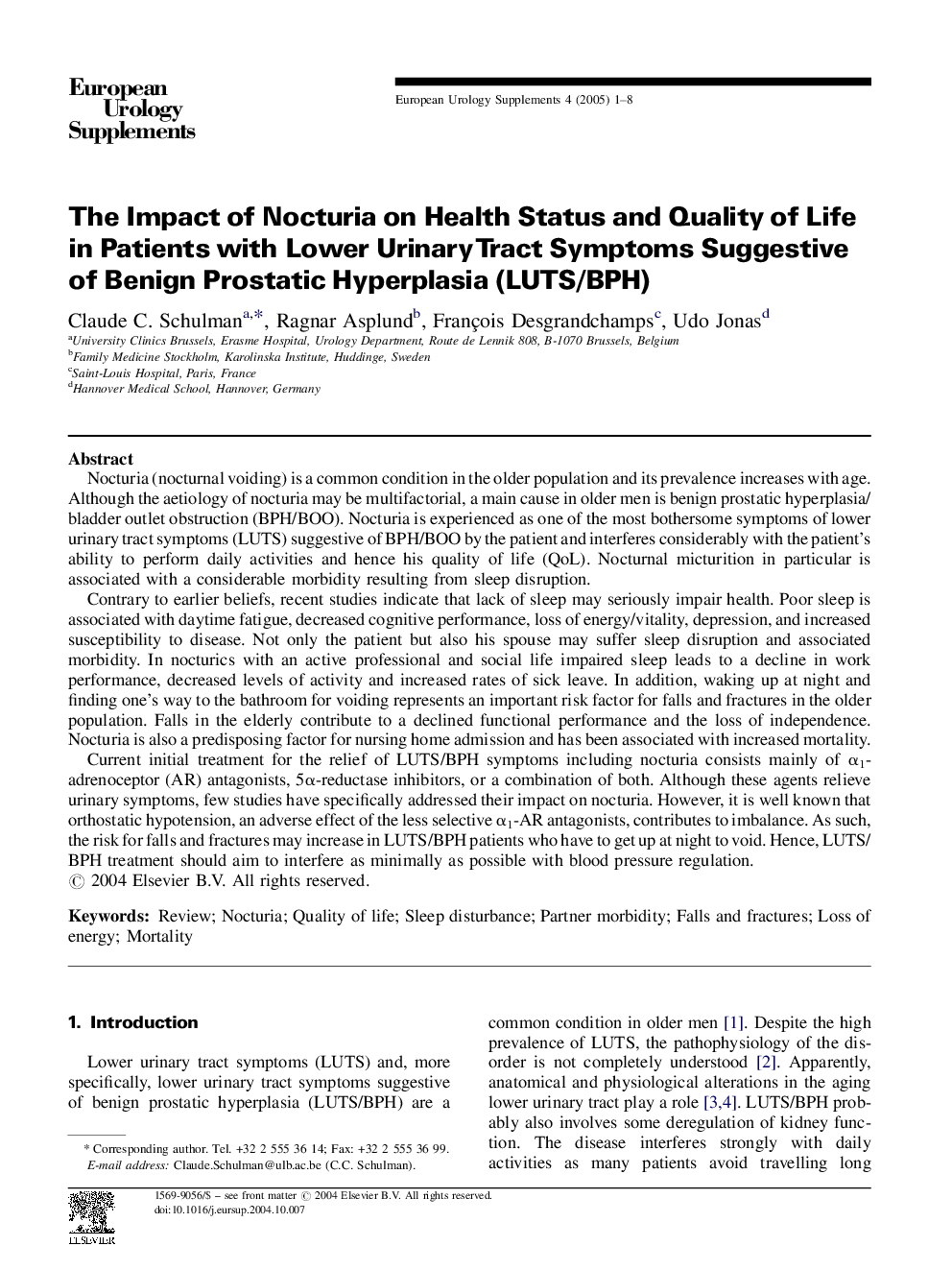| Article ID | Journal | Published Year | Pages | File Type |
|---|---|---|---|---|
| 9320756 | European Urology Supplements | 2005 | 8 Pages |
Abstract
Current initial treatment for the relief of LUTS/BPH symptoms including nocturia consists mainly of α1-adrenoceptor (AR) antagonists, 5α-reductase inhibitors, or a combination of both. Although these agents relieve urinary symptoms, few studies have specifically addressed their impact on nocturia. However, it is well known that orthostatic hypotension, an adverse effect of the less selective α1-AR antagonists, contributes to imbalance. As such, the risk for falls and fractures may increase in LUTS/BPH patients who have to get up at night to void. Hence, LUTS/BPH treatment should aim to interfere as minimally as possible with blood pressure regulation.
Related Topics
Health Sciences
Medicine and Dentistry
Obstetrics, Gynecology and Women's Health
Authors
Claude C. Schulman, Ragnar Asplund, François Desgrandchamps, Udo Jonas,
